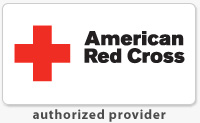What is hands-only CPR (without breaths)?
Is it true that CPR is now performed without breaths?
CPR stands for cardiopulmonary resuscitation. “Cardio” refers to the heart and “pulmonary” refers to the lungs. So, traditionally speaking, CPR is performed as a combination of chest compressions (to pump blood throughout the body) and ventilations (rescue breaths containing oxygen to help keep the vital organs alive).
There is, however, an abbreviated version of CPR that is performed without breathing into the victim. There are different names for this, but generally it is referred to as “hands-only CPR” or “compression-only CPR.”
While this abbreviated version of CPR helps to save lives, it is less effective.That is because the primary element in blood that’s necessary to sustain life is oxygen, and that oxygen needs to be replenished. That said, given a choice between offering some care or no care at all, compression-only CPR or hands-only CPR is a great alternative, as most likely there’s at least some residual oxygen left in the body when it is found. But after 4 minutes of hands only CPR, there will be little oxygen left in the blood stream.
So when is CPR without breaths appropriate? Well, here are a couple of examples:
- When it is not safe to give breaths, as in when there is no “breathing barrier” available to protect the rescuer from potential disease transmission.
- When the only rescuer on the scene is untrained (or has forgotten their training), but 911 has been called and the dispatcher is able to provide only very basic telephone instructions to help: “Put your hands on the center of the chest and press hard and fast.”
Once again, doing something is better than doing nothing at all. Doing something has potential for helping a person, while doing nothing does not. So compression-only or hands-only CPR does help to save lives. It should be encouraged. But doing traditional CPR is still more effective than CPR without breaths. Therefore, getting as many people in the community trained in traditional CPR (and AED) as possible is our goal at Longmont CPR.
